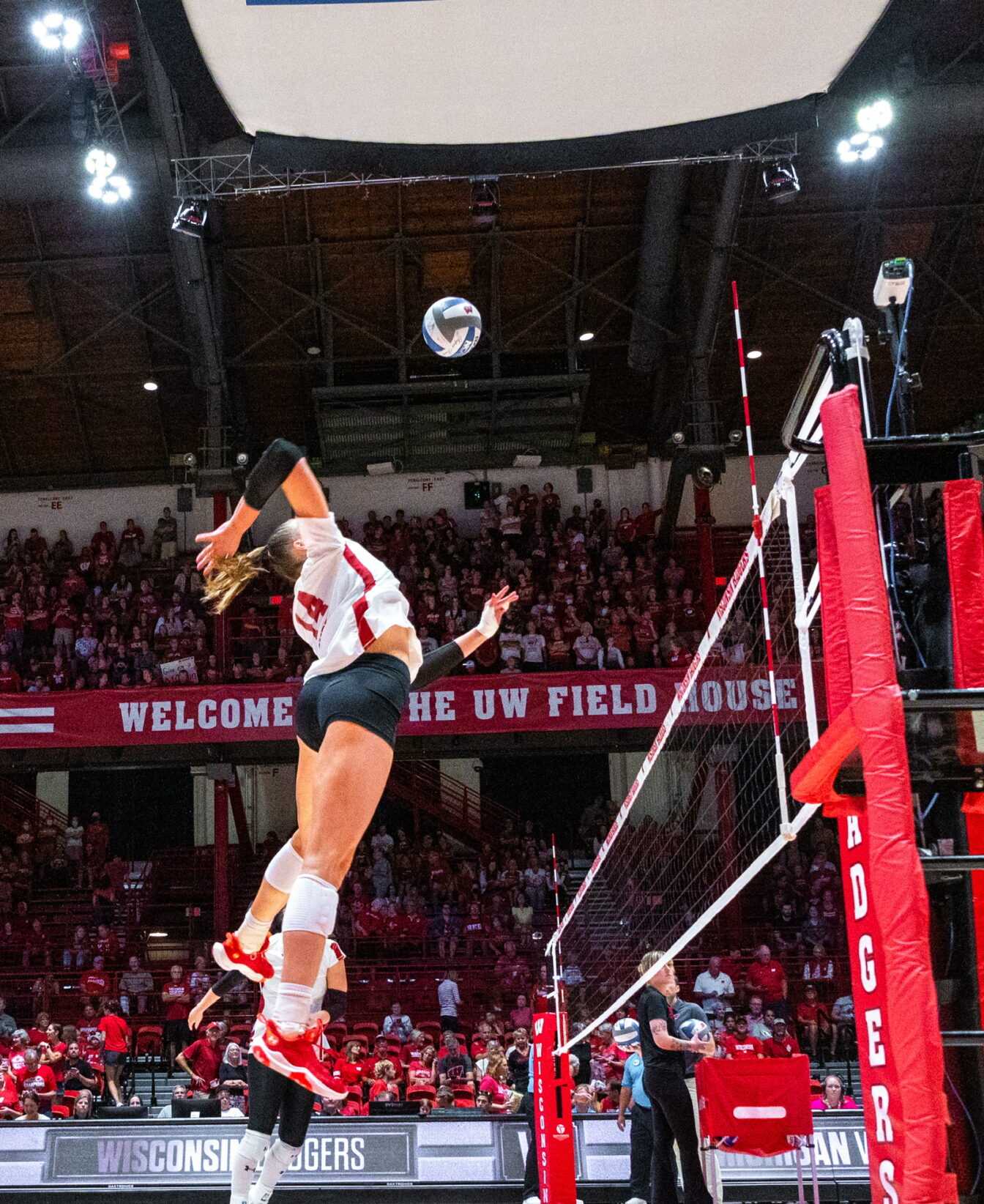No slapping matter
By Smith Pharis, Men’s Hockey Writer
Facing the high-speed, unforgiving slap shot is no treat, and as anyone will tell you, it is a task reserved for the blue-collar player.
The most powerful and least accurate blast in the game of hockey, the resonation of a slap shot hitting the boards can send chills through your body, and the sight of a puck colliding with a player can turn your stomach.
“It takes courage,” Wisconsin men’s hockey head coach Mike Eaves said after facing these shots for eight years in the NHL.
Eaves and his staff are aware of the importance of closing shooting lanes to the net, and they jointly teach the finer defensive slap-shot techniques in practice.
“[Blocking slap shots] is definitely a strategy,” Eaves said. “It’s a dirty job, but it is very effective.”
In dogmatic fashion, the Wisconsin coaching staff preaches the technique termed as “high-low” to prevent goals via slap shots, which travel anywhere from 50 to 90 mph in the college ranks. (Former NHL great Bobby Hull once had his shot clocked at 140 mph.)
Before launching into high-low, however, the defensive player must first align himself with the puck, not the offensive player’s body, a method not surprisingly known as “lining up with the puck.”
The term high-low describes the vertical body movement of a player as he attempts to shield the goal by creating a human barrier that moves both up and down while the player manipulates his stick to act as a broom, sweeping it from side to side, to sanction wide passes, not shots by the opposition.
When a “slapper” is about to be ripped, junior defenseman and assistant captain Dan Boeser, for example, falls to one knee and holds his stick just below kneecap height.
Done right, it takes near perfect shot placement to get the puck on goal.
“When you get big-low, it discourages the shooter from shooting the puck,” Eaves said. “If he does shoot, then you are usually there to block it.”
The biggest taboo while defending the slap shot is to fall to the ice and sprawl in an attempt to jam the puck. A felled player not only loses valuable position but also puts himself in harms way. Most injuries occur when a player is in this position.
“The only time that you want to go all the way down is on last resort,” Boeser instructed.
Even with a well-executed technique, there are still lingering qualms. Instances of short-handed play, juke moves and the loss of poise keep the modus operandi from being foolproof.
“Not giving any options around you [is the biggest challenge] — making sure he can’t fake it,” sophomore forward Pete Talafous said. “You need to have enough balance and stability to switch or change directions.”
Freshman Nick Licari, who stands 5-foot-8 and weighs 170 pounds, has proven that size doesn’t matter when it comes to creating a visual obstacle. Tabbed by Eaves as the best slap-shot stopper on the team, Licari’s defensive wizardry has shown significant improvement over the course of the season, and he played the high-low very well against Alaska-Anchorage Feb. 7.
“Playing big guys (like Brad Winchester and Andy Wozniewski) in practice has helped,” Licari said. “[Taking pucks] is something you have to do, and it’s part of my game — it hurts.”
The risk of serious injury from a blazing puck, however, is surprisingly minute when the high-low is carried out properly.
“The only time I suffer injuries from slap shots is when I turn away from shots or try not to get hit,” Talafous confessed.
Thanks to padding, injuries are usually kept to mere black and blue reminders, although there are exceptions to every rule. Eaves suffered a broken foot after a puck struck his skate during his playing days. During his stint as assistant coach for the NHL’s Pittsburgh Penguins, Eaves witnessed one of the more brutal harms brought on by a slap slot to defenseman Ian Moran.
“[Moran] blocked a shot with his (athletic) cup,” recalled a chuckling Eaves. “And (he) had a bruised testicle — it was listed as that in the games notes.”
Whether your playing amateur or professional hockey, the answer remains plain and simple: You have to give up your body for the team no matter what the costs.













